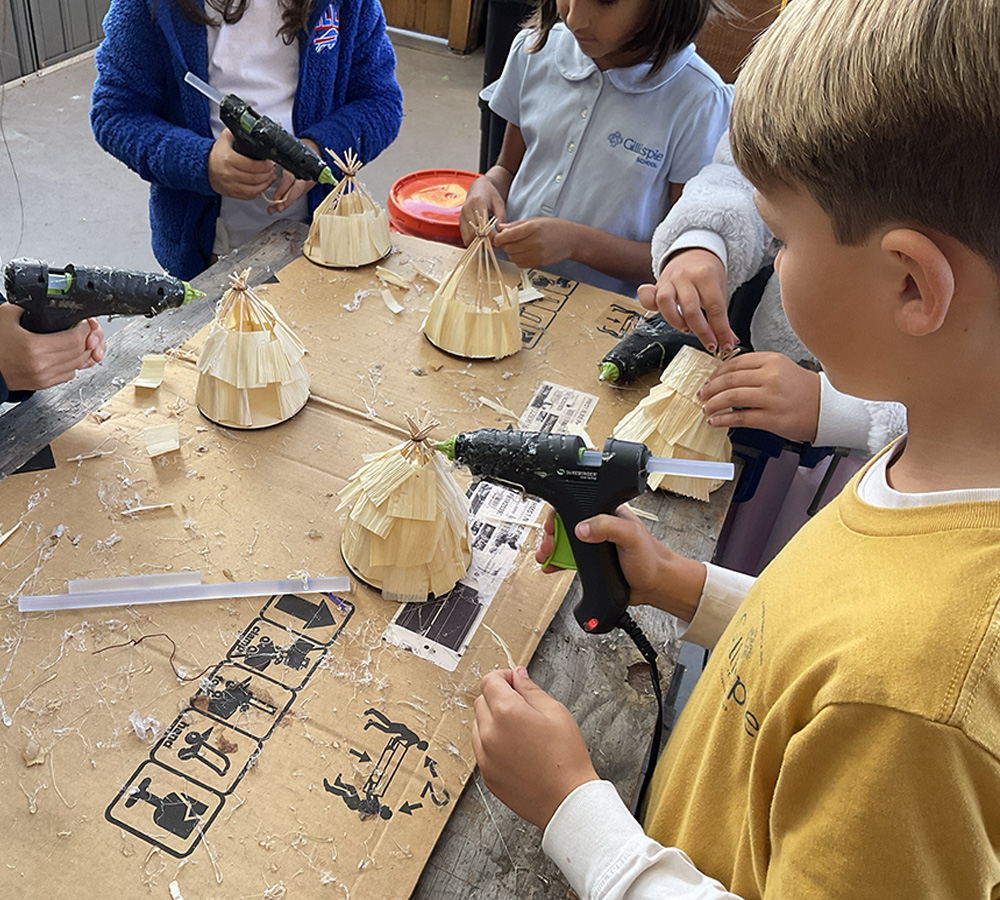The third grade students recently finished creating individual “ewaahs” as part of their Social Studies exploration of the Kumeyaay, a native Californian people.
Traditionally, these dome-shaped dwellings were constructed using locally available materials, such as green, flexible branches for inner supports and durable plant or animal materials for covering. In the local context, the Kumeyaay typically used Tule reeds thatched over a structure of Willow branches.
One of the core objectives of the projects selected for our design sessions is to enable students to engage with curricular content from a different perspective. This involves using various skills, tapping into different parts of the brain, and delving more deeply into the subject matter for an extended period.
With this project, students worked with natural materials as they were introduced to basic ewaah construction principles. This included learning to thatch from the bottom layer first, creating a smaller-than-assumed door, and ensuring there was a smoke hole for an interior fire. We opted for a wooden base, soaked chair caning for flexible inner supports, and corn husks for thatching.
Additionally, students had the option to incorporate these ewaahs (also spelled ewaa, waah, and waah) into the dioramas they crafted in their homerooms.
by Chip Edwards and Brian Belsha, Science Design Teachers
